The Victorian era imbued bathrooms with a sense of opulence and craftsmanship that remains endlessly inspiring. Characterized by graceful curves, luxurious materials, and ornate detailing, Victorian bathroom design blends functionality with artful elegance. From the timeless appeal of clawfoot bathtubs to the intricate patterns of encaustic tiles, each element contributes to a cohesive aesthetic rooted in history yet adaptable to modern living. By carefully selecting fixtures, finishes, and decorative accents, homeowners can evoke the romance and grandeur of the 19th century while ensuring contemporary comfort and convenience. The following twenty ideas explore the quintessential components and creative interpretations that define a truly Victorian bathroom.
1. Clawfoot Bathtub

A hallmark of Victorian bathing spaces, the clawfoot bathtub features graceful, sculpted feet and a deep basin, offering both comfort and visual impact. Often crafted from cast iron coated in porcelain, these tubs retain heat exceptionally well, making long soaks indulgent. Their elevated design creates an airy feel and showcases the tub as the room’s centerpiece. Contemporary adaptations include freestanding versions with modern finishes or colored exteriors that pay homage to tradition while integrating seamlessly into today’s décor.
2. Pedestal Sink
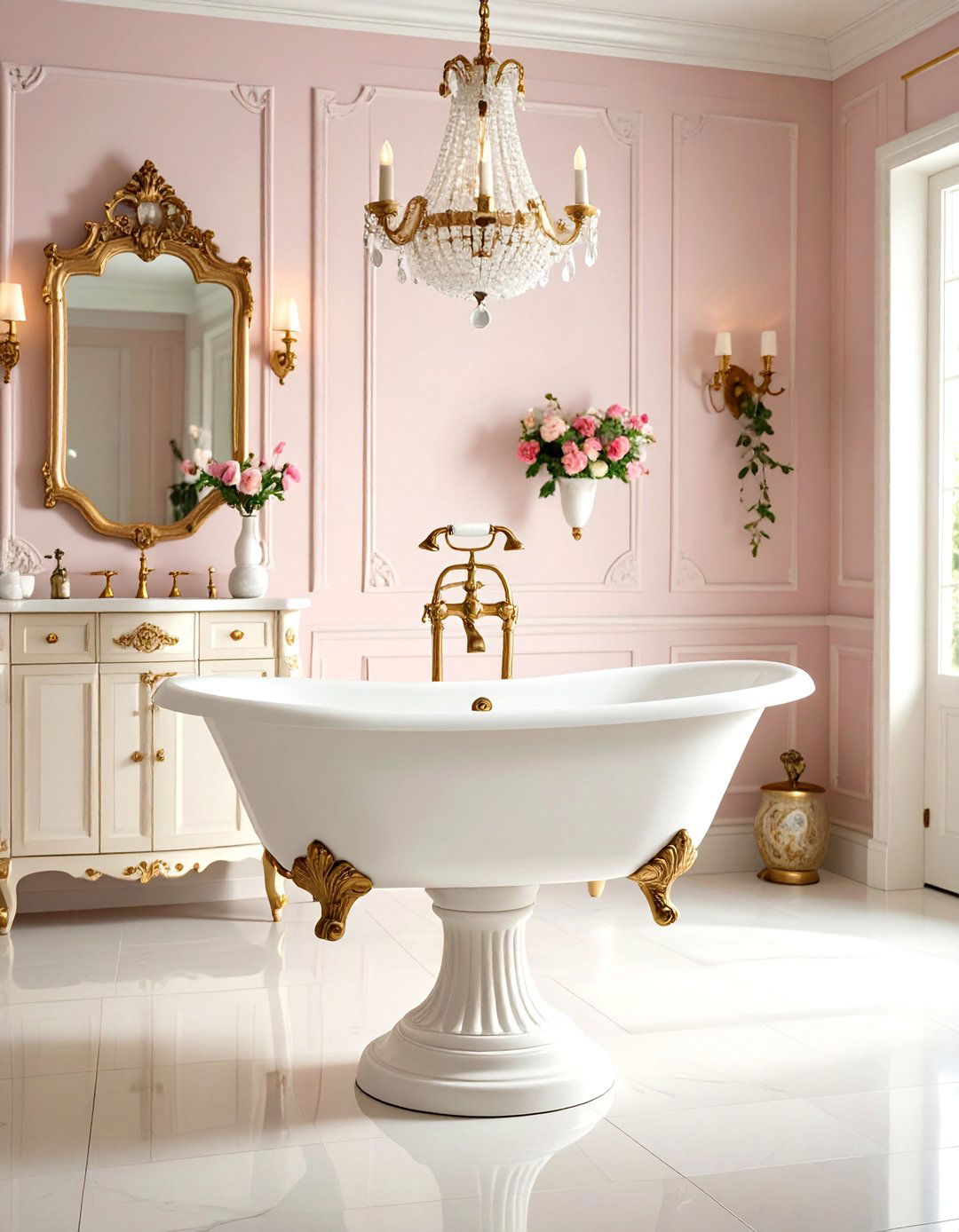
Pedestal sinks epitomize the Victorian penchant for elegant simplicity. With a slender column supporting a spacious basin, these fixtures combine practicality with sculptural form. Their compact footprint makes them ideal for smaller bathrooms, while the exposed plumbing and clean lines reinforce the period aesthetic. Available in a variety of shapes—square, oval, or rectangular—pedestal sinks can be paired with matching faucets and accessories to complete the cohesive Victorian look.
3. High Tank Toilet
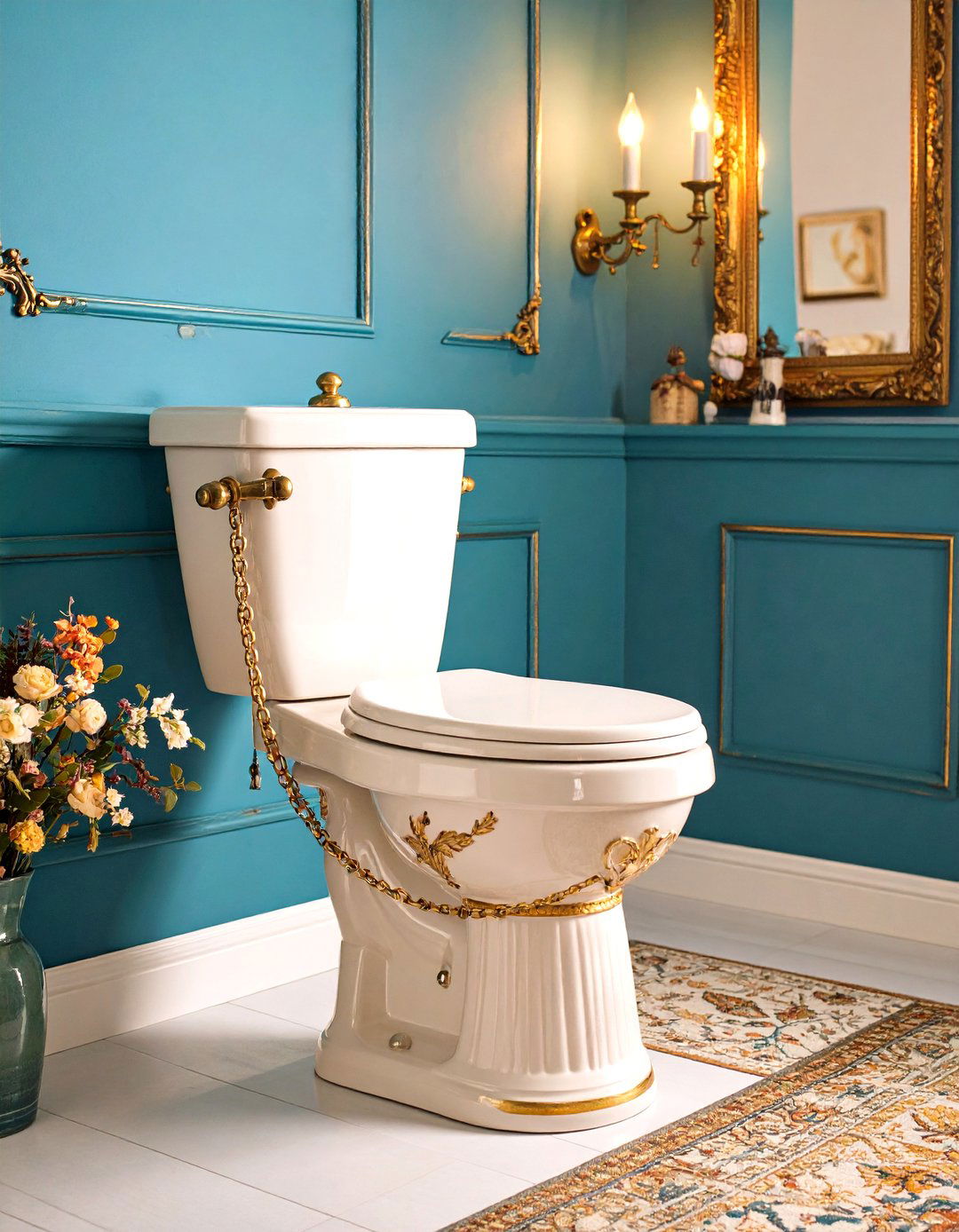
High tank toilets, featuring a cistern mounted high on the wall and connected via a pull chain, evoke the mechanical charm of the late 19th century. The elevated tank creates a distinctive silhouette, and the gentle pull-chain flush adds a nostalgic ritual element. Modern reproductions maintain the classic appearance while meeting today’s water-efficiency standards, ensuring both authenticity and environmental responsibility in a Victorian-inspired bathroom.
4. Victorian-Style Faucets
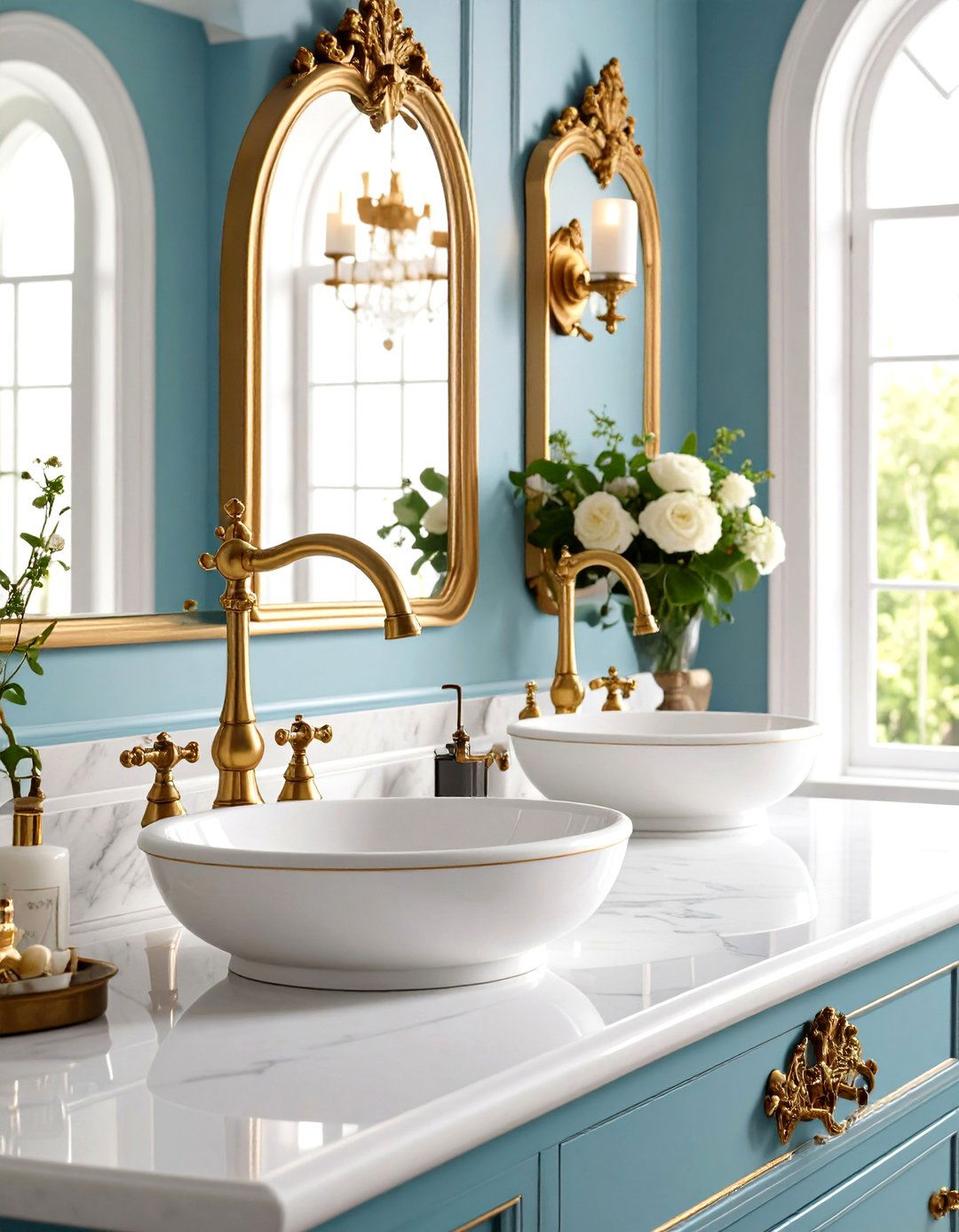
Ornate faucets with delicate curves, cross handles, and porcelain accents capture the decorative flair of Victorian plumbing. Traditionally finished in polished brass or nickel, these taps often feature intricate detailing such as floral motifs or fluting. Whether mounted on a freestanding tub or a vanity, Victorian-style faucets serve as sculptural focal points, combining historical charm with reliable modern performance.
5. Subway Tiles
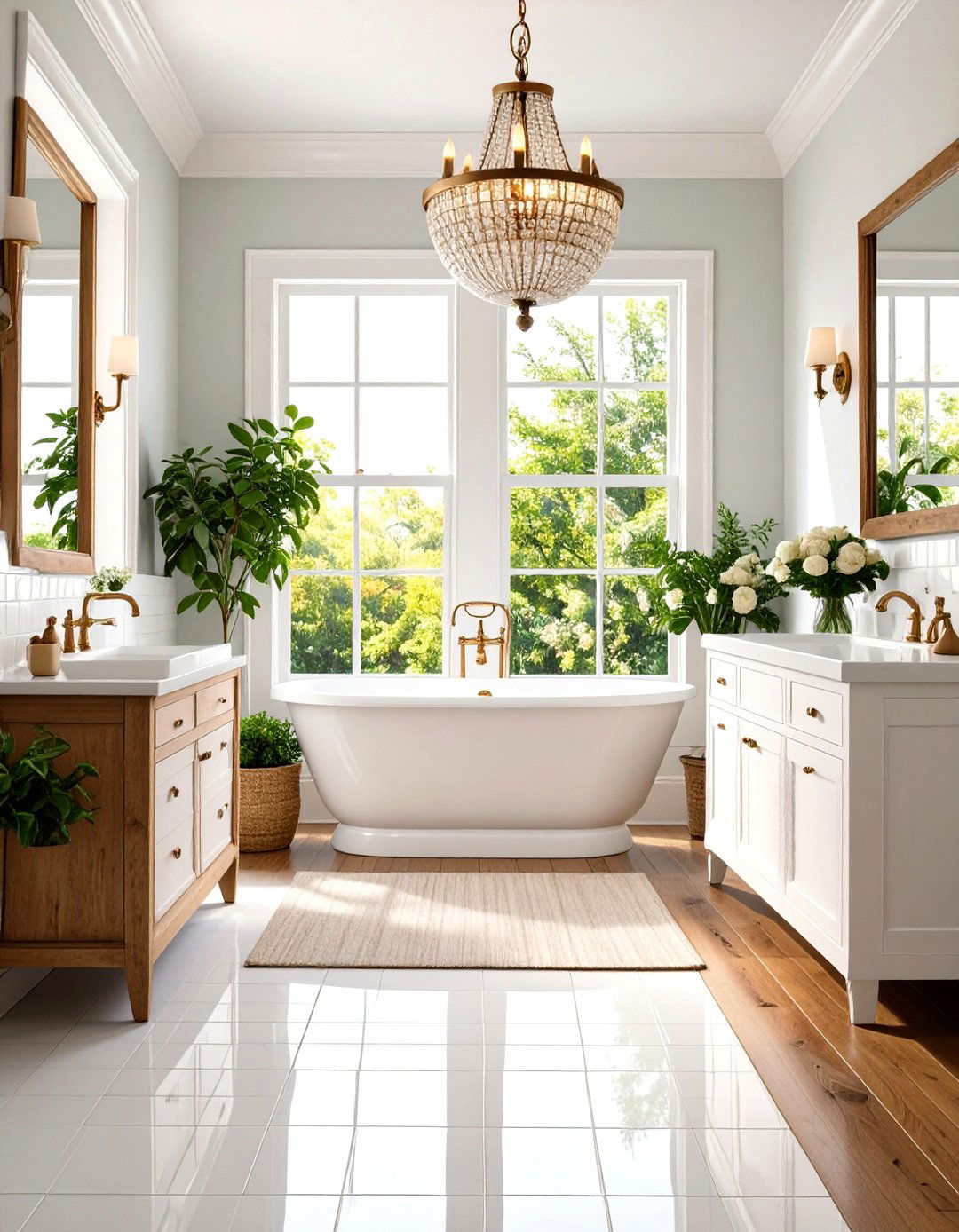
Introduced in the late 19th century, white subway tiles became synonymous with clean, hygienic spaces and remain a staple in Victorian bathroom design. Laid in classic brick bond or creative patterns like herringbone, these tiles provide a bright backdrop that complements darker accents and ornate fixtures. Their glossy surface reflects light, enhancing the room’s sense of space and cleanliness.
6. Hexagonal Floor Tiles
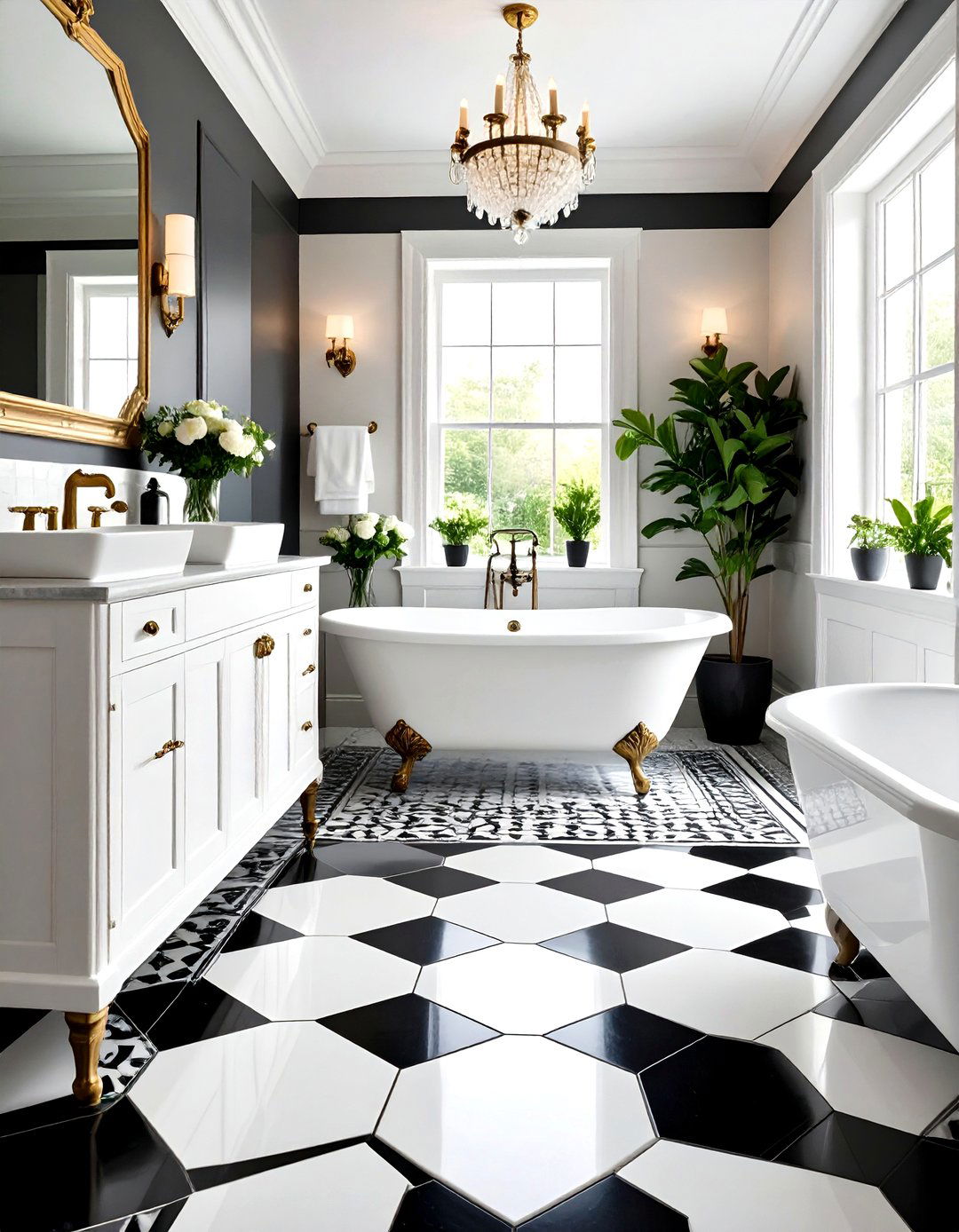
Hexagonal mosaic floor tiles offer both durability and intricate pattern potential, echoing the geometric preferences of Victorian interiors. Typically available in black-and-white palettes or muted earth tones, these tiles can form border motifs, central medallions, or overall tessellations. The tactile surface adds slip resistance while the visual complexity reinforces the period’s attention to detail.
7. Stained Glass Windows
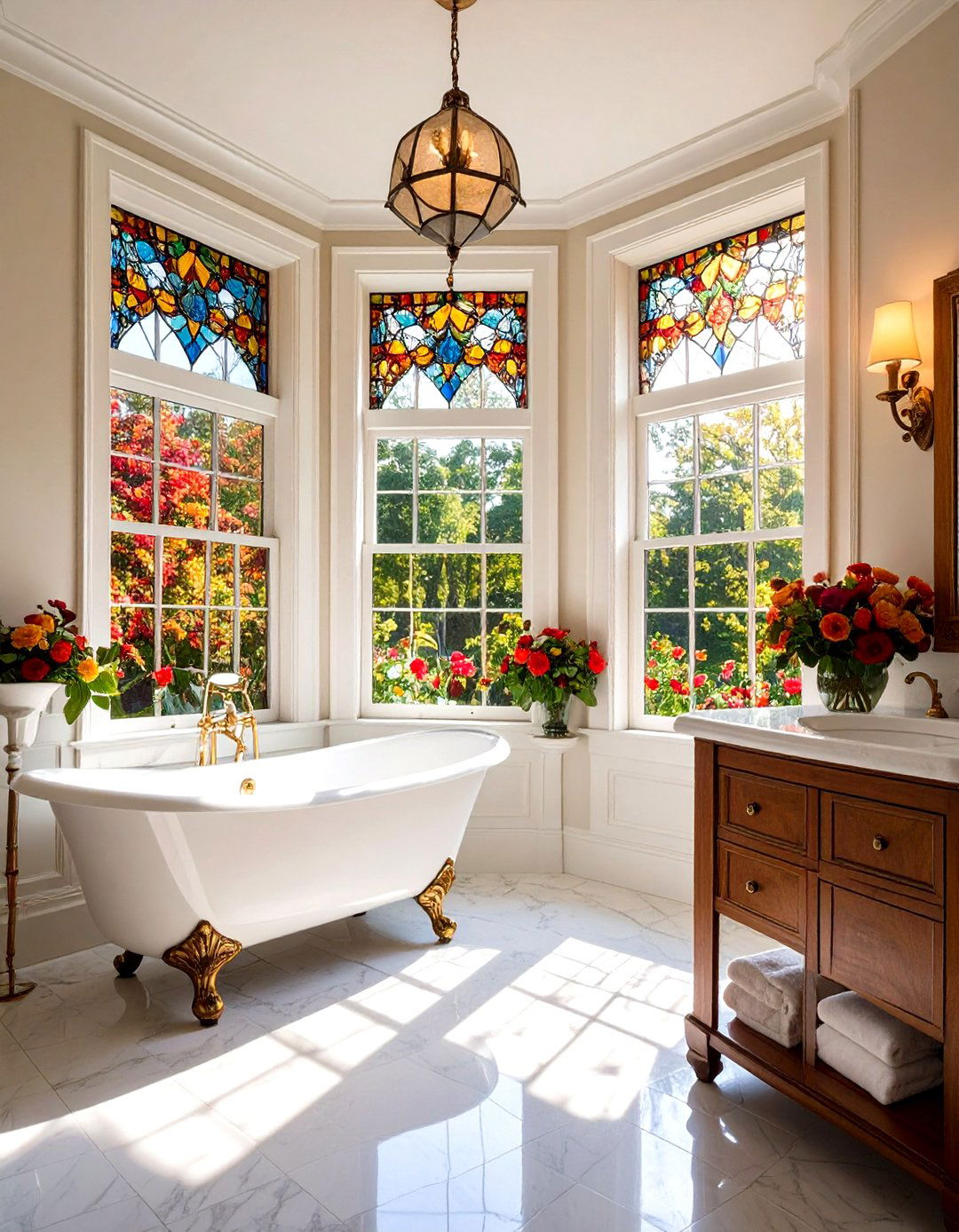
Incorporating stained or leaded glass windows introduces color, privacy, and artisanal craftsmanship characteristic of Victorian architecture. Floral designs, geometric patterns, or jewel-toned panes filter natural light into kaleidoscopic hues, creating a serene and private retreat. Custom or reproduction windows can be installed as accents or full window treatments to infuse the bathroom with authentic period charm.
8. Ornate Mirrors
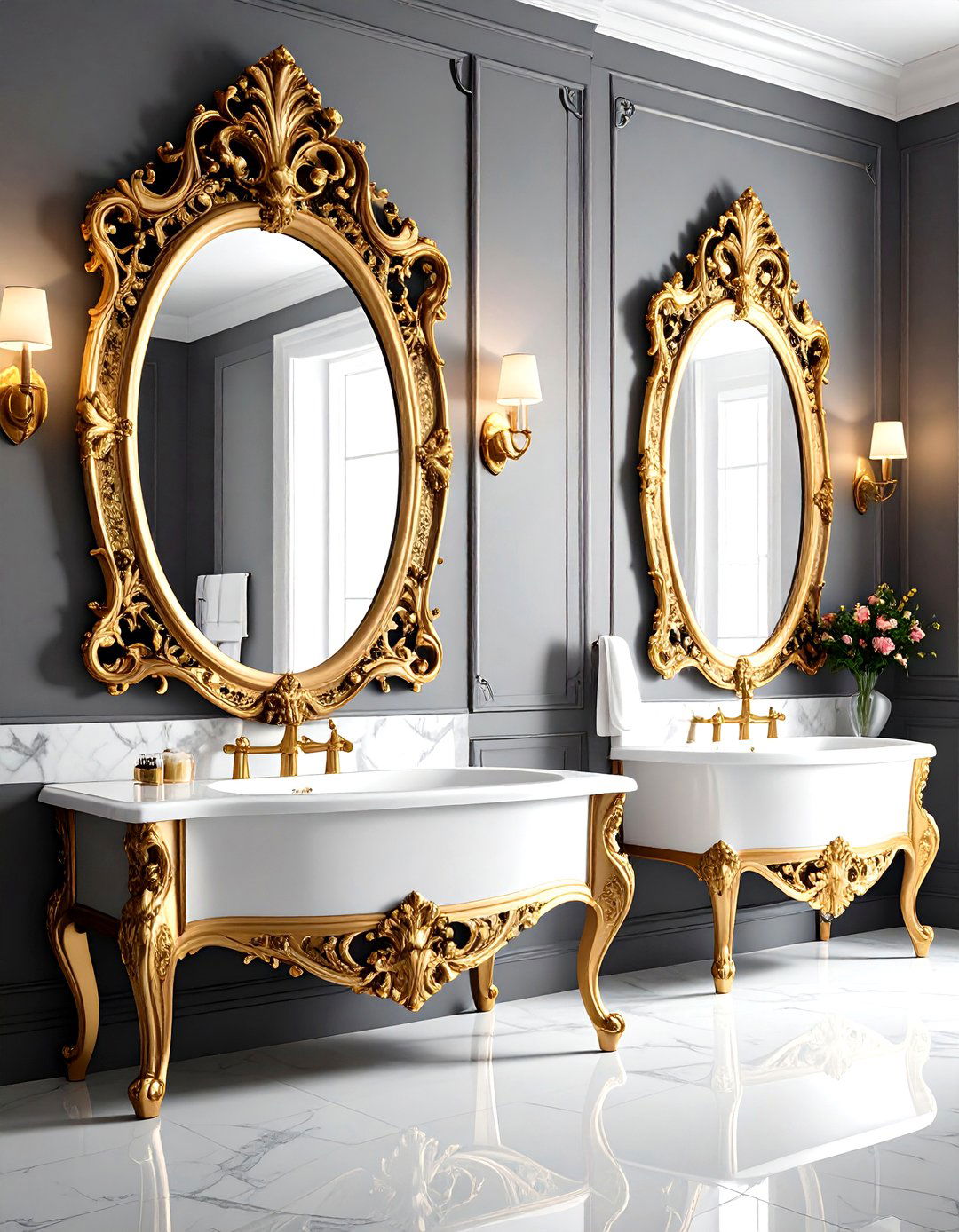
Elaborately framed mirrors, often in gilded or distressed finishes, serve as both functional and decorative elements in Victorian bathrooms. Shapes range from oval to arched tops, with frames featuring scrollwork, acanthus leaves, and other classical motifs. Positioned above the sink or vanity, these mirrors amplify light and space while reinforcing the era’s penchant for lavish ornamentation.
9. Vintage Vanity
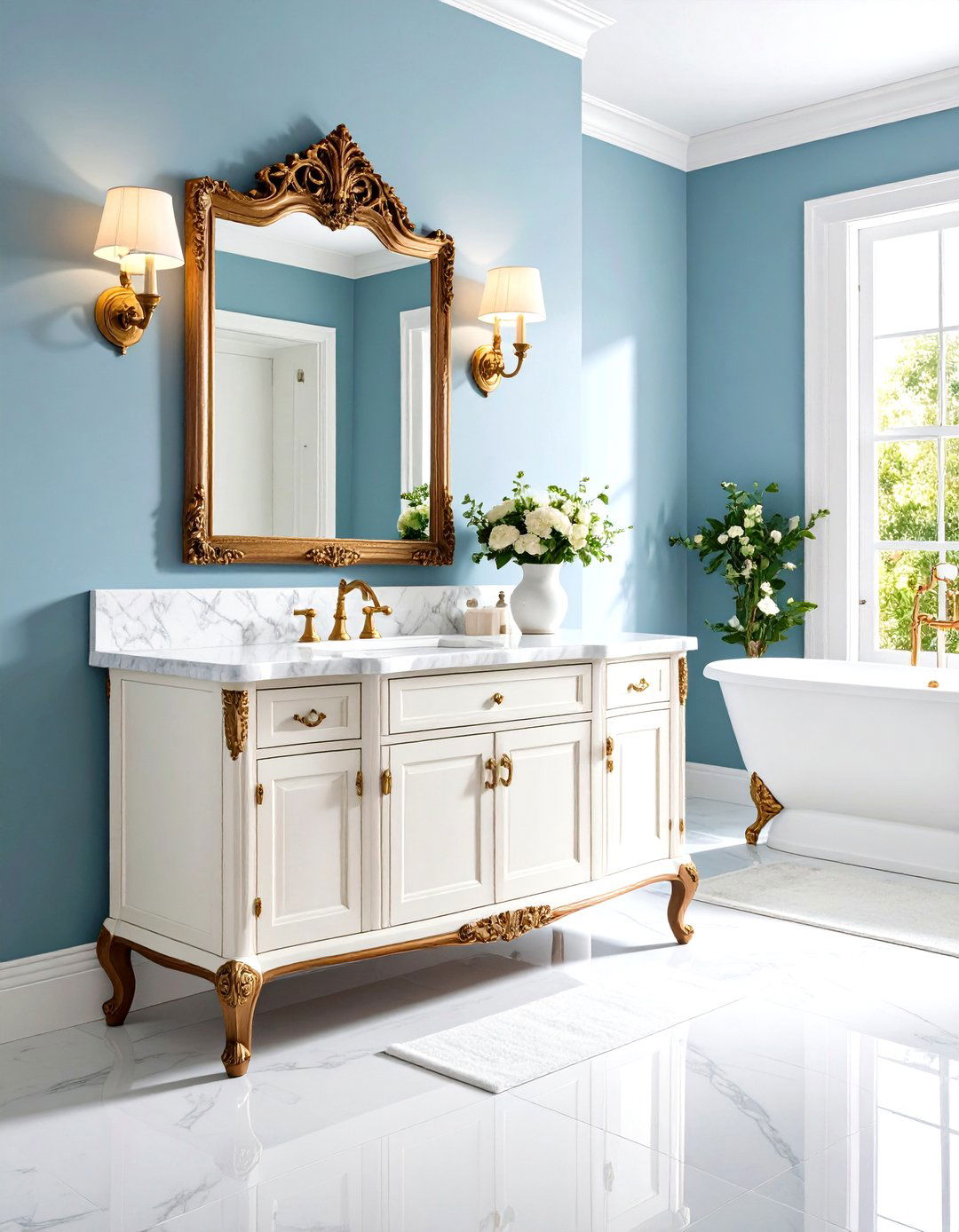
Repurposing antique furniture—such as an oak dresser or marble-topped washstand—into a bathroom vanity adds authenticity and storage. Retained hardware, carved wood details, and original patina celebrate craftsmanship. Countertops can be modified to accommodate sinks, while maintaining the piece’s structural integrity and historical character.
10. Freestanding Wooden Cabinet
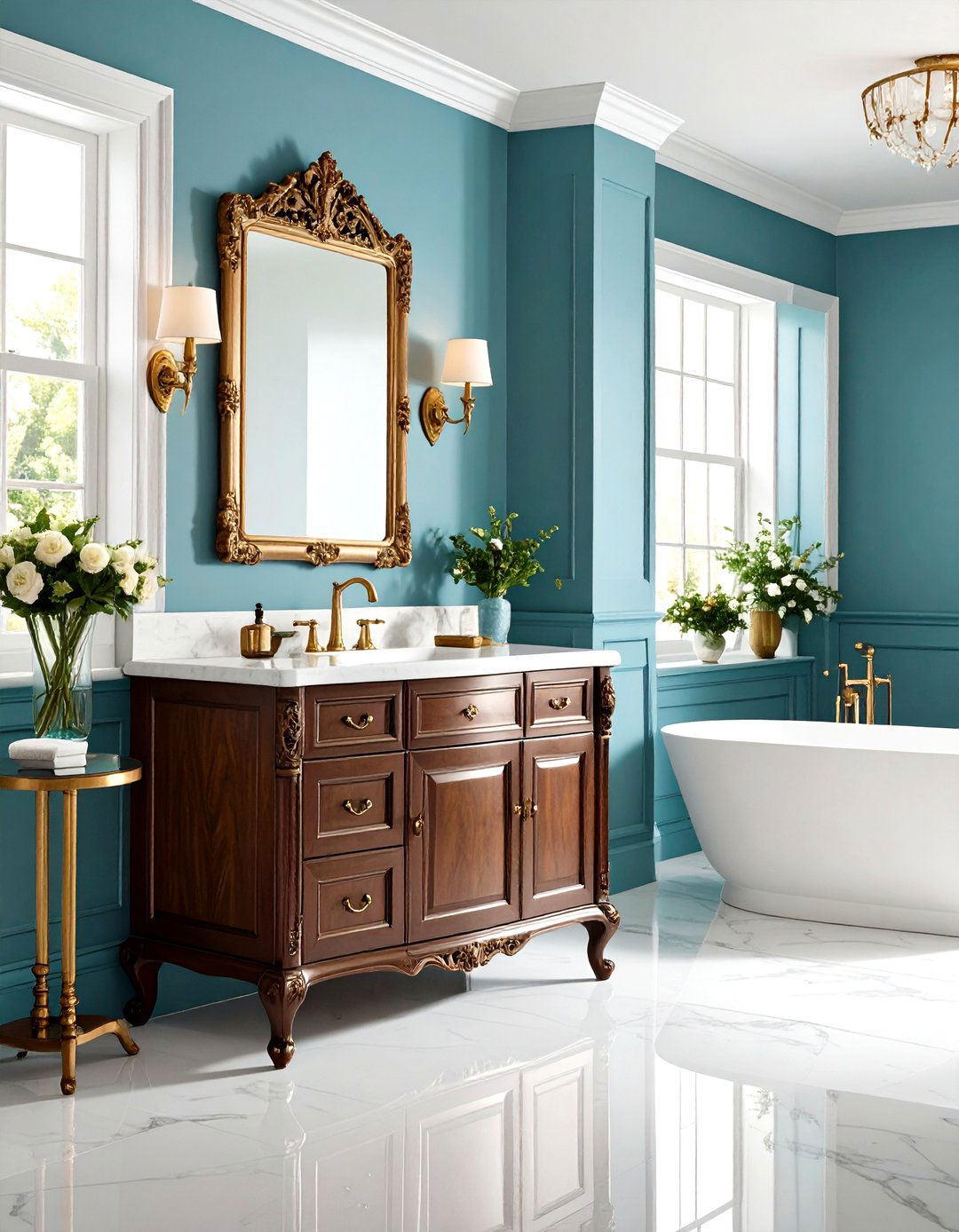
A freestanding wooden cabinet with intricate carvings and turned legs provides versatile storage for linens and toiletries. Rich woods like mahogany or walnut evoke Victorian luxury, while bracket feet and paneled doors echo period joinery. An oil-rubbed finish can protect against moisture while highlighting the grain and carved details.
11. Brass Fixtures

Solid brass towel rails, robe hooks, and soap dishes offer a cohesive metallic accent that warms the Victorian palette. Known for durability and evolving patina, brass fixtures can be polished for shine or allowed to develop a subtle aged finish. Their consistency with faucet materials ensures a unified look throughout the space.
12. Wall Sconces

Brass or bronze wall sconces with opal glass shades soften illumination and contribute vertical interest. Positioned beside mirrors or alcoves, they replicate gas-light silhouettes common in Victorian homes. Hardwired or converted to electric models, these fixtures balance ambiance and task lighting, framing focal points with gentle radiance.
13. Chandelier
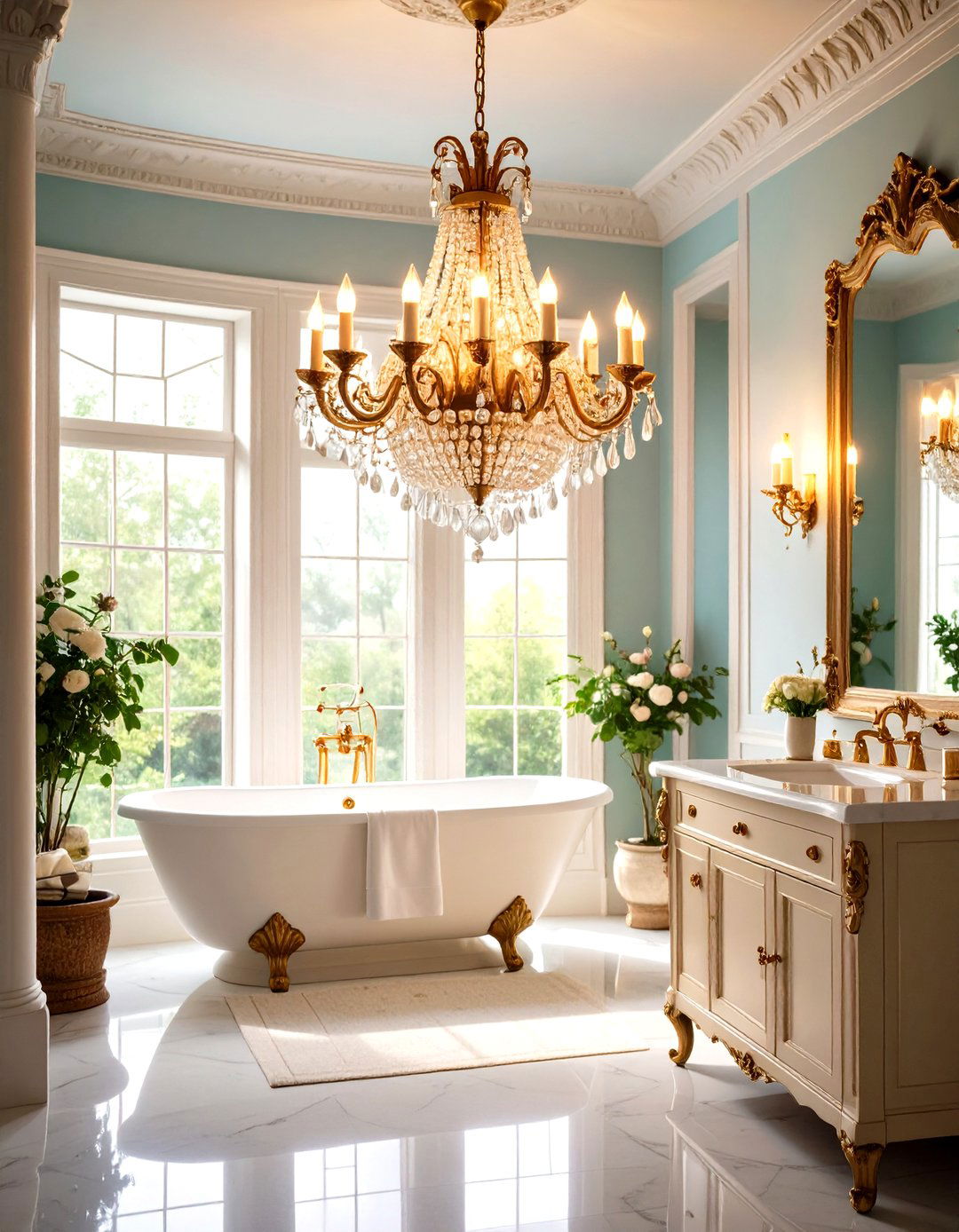
A small chandelier or pendant light introduces theatrical flair and draws the eye upward to decorative ceiling medallions. Crystals, metal scrolls, and fabric shades can be combined to evoke Victorian grandeur on a reduced scale suitable for modern bathrooms. Low-wattage bulbs ensure a warm, diffused glow without overwhelming the intimacy of the space.
14. Picture Rails

Installed high on the walls, picture rails allow artwork or decorative plates to hang without damaging plaster below. Moulded rails echo period carpentry and provide an opportunity to display framed botanical prints, architectural sketches, or vintage advertisements, reinforcing the Victorian love of curated decoration.
15. Chair Rail Molding
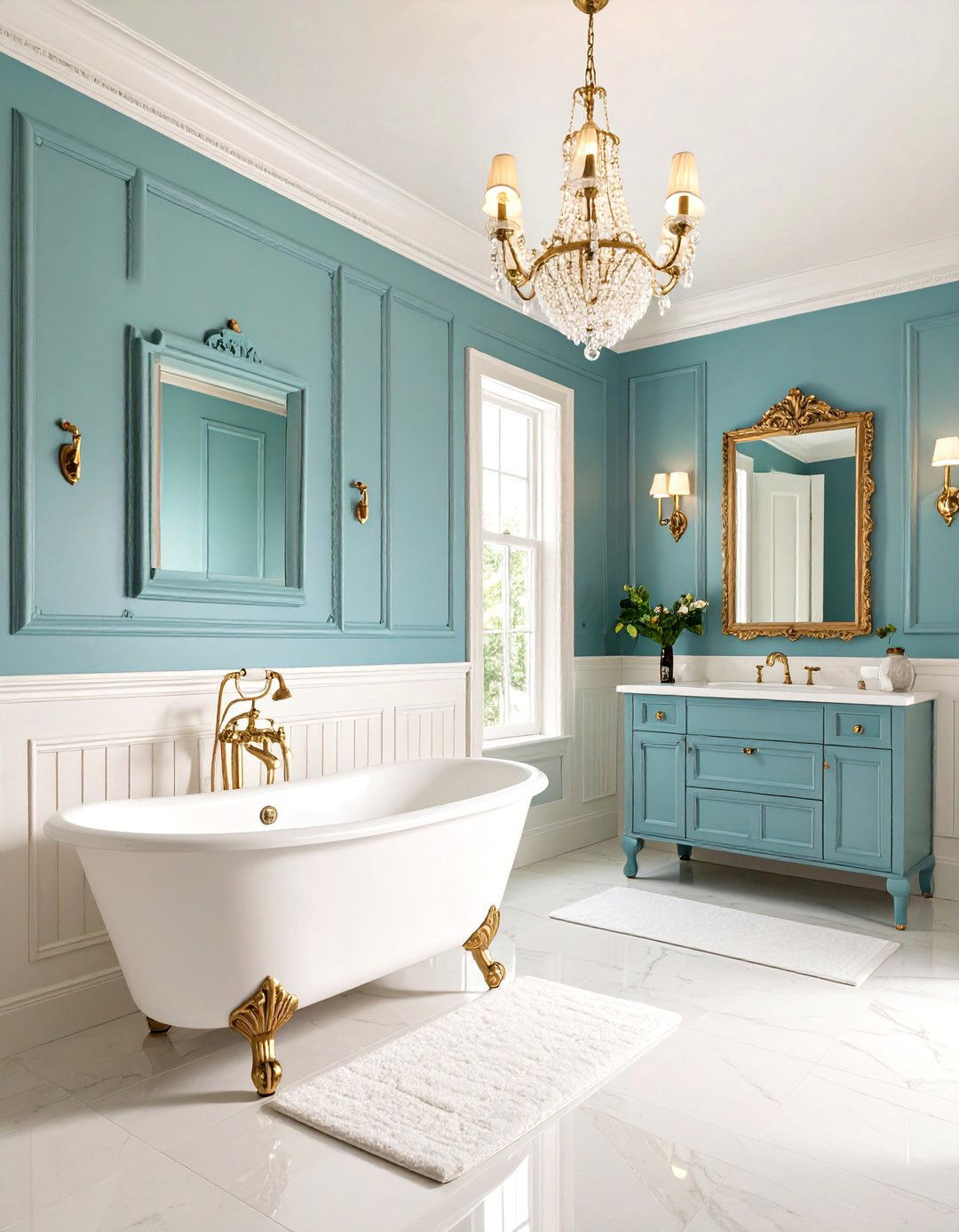
Chair rails, typically installed at mid-wall height, protect surfaces and break up wall color or wallpaper patterns. Combined with beadboard or wainscoting below, they add dimension and a tactile element, reflecting the layered wall treatments popular in 19th-century interiors.
16. Mosaic Tile Borders
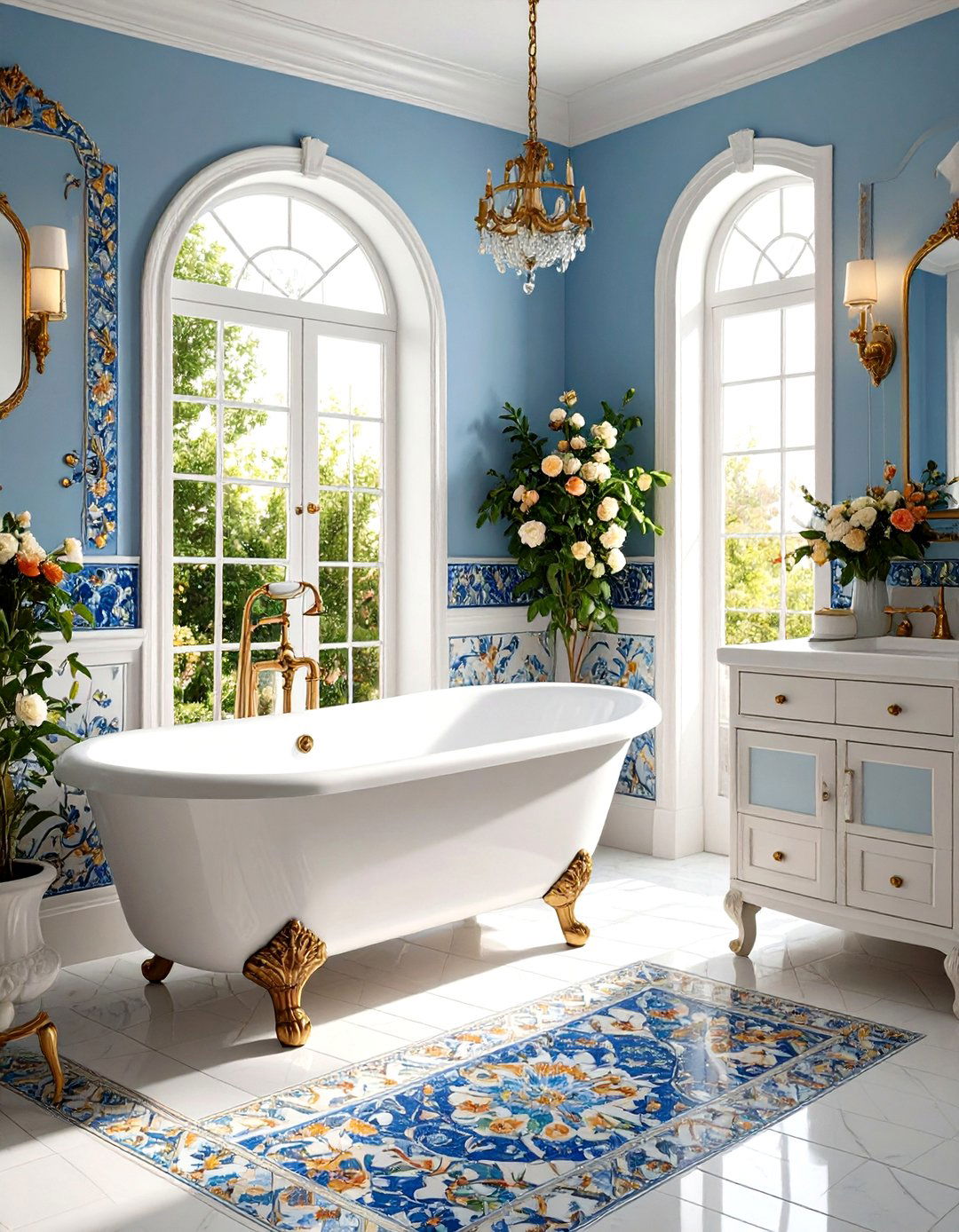
Delicate mosaic tile borders often frame floors, bathtubs, or shower niches in intricate floral or geometric motifs. These handcrafted designs anchor the room’s color scheme and showcase artisanal skill. Whether composed of glass, ceramic, or encaustic tiles, borders elevate plain surfaces and recall the tiled mosaics of Victorian public baths.
17. Wallpaper Accents

Boldly patterned wallpaper—featuring damasks, florals, or chinoiserie—adds drama and texture to half-walls or ceiling planes. Vinyl-coated or moisture-resistant varieties withstand bathroom humidity, enabling homeowners to experiment with color and scale. Wallpapered alcoves or niches can become focal points, balancing the hard surfaces elsewhere.
18. Marble Surfaces

Marble countertops, windowsills, and tub surrounds bring cool sophistication and durability. Varieties like Carrara or Calacatta offer soft veining that contrasts with ornate fixtures. Polished or honed finishes suit different styles, while precast marble sink basins integrate seamlessly for a monolithic, spa-inspired feel.
19. Patterned Encaustic Tiles
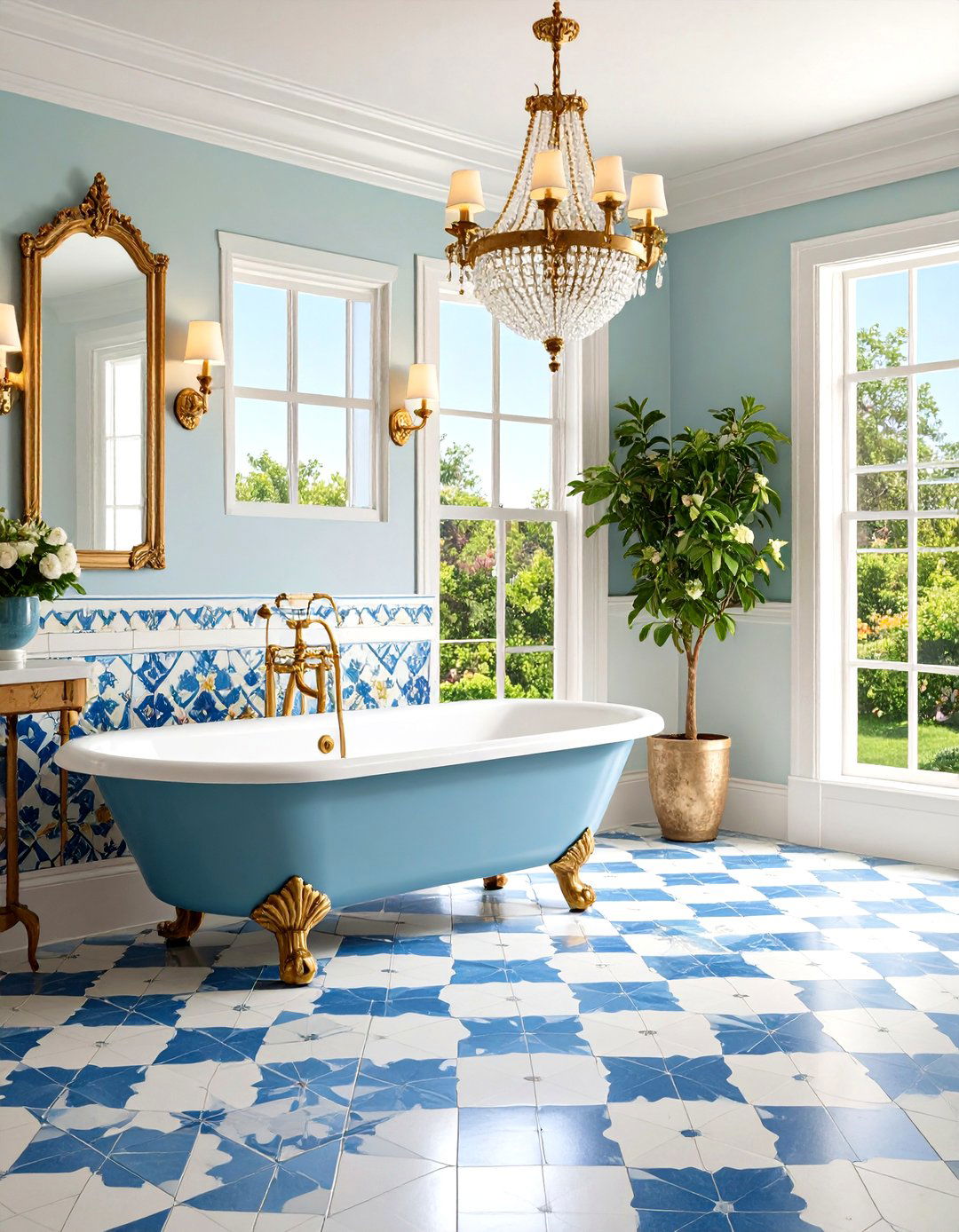
Encaustic cement tiles with repeating quatrefoils, arabesques, or trellis patterns capture Victorian ornamentation in durable flooring options. Their hand-pressed pigments create depth and color variation. Laid in checkerboard or border configurations, encaustic tiles instill historic authenticity and artisanal character underfoot.
20. Decorative Radiators
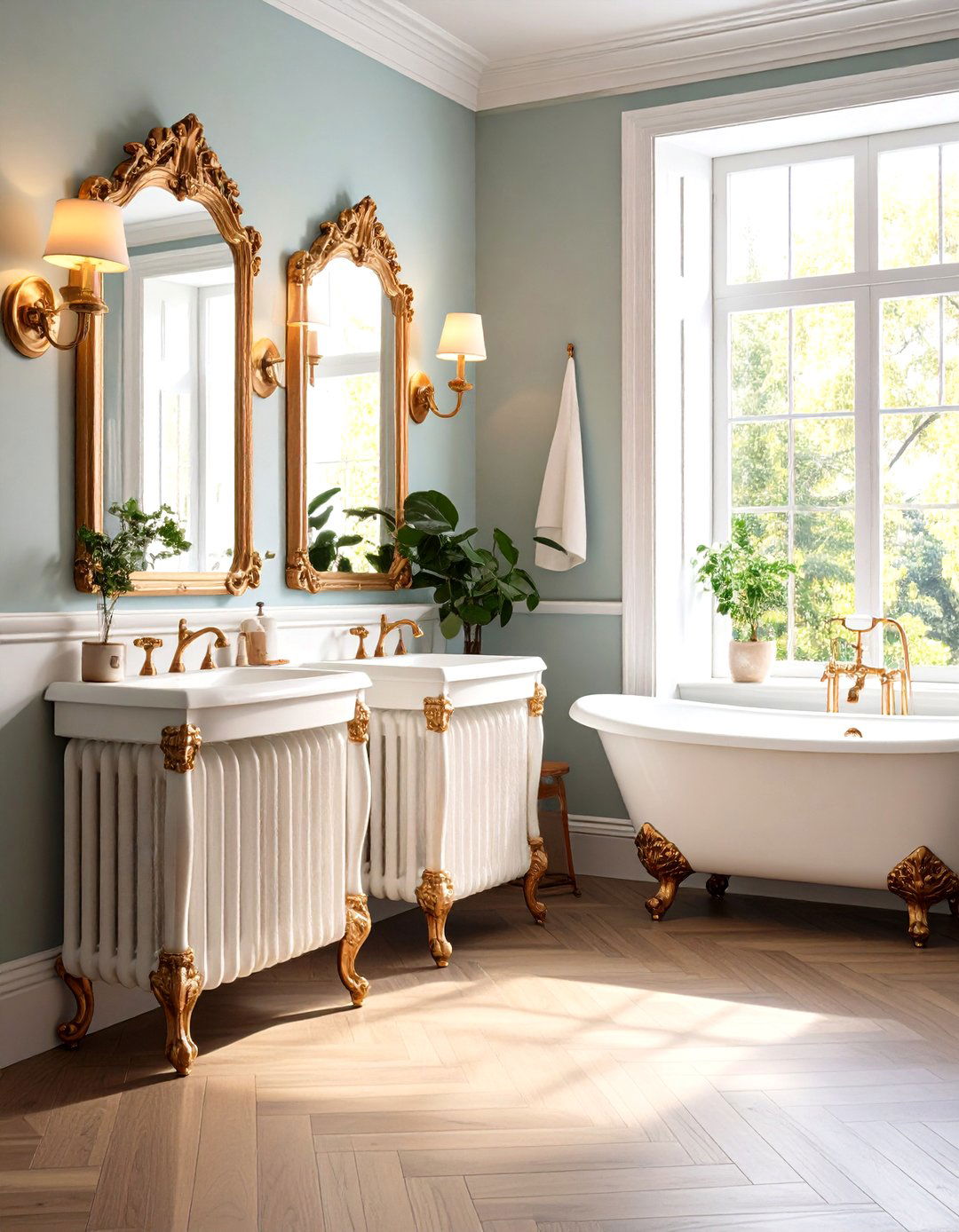
Cast-iron radiators with scrollwork or columnar profiles offer essential warmth and spark visual interest. Painted in contrasting or coordinating hues, they become sculptural elements. Placed below windows or along walls, decorative radiators recall the functional artistry of Victorian heating systems while providing modern comfort.
Conclusion:
Victorian bathroom design marries formality with thoughtful detail, inviting a balance of lavish ornamentation and practical comfort. By selecting hallmark fixtures—such as clawfoot tubs, pedestal sinks, and mosaic tiles—and layering with moldings, wallpapers, and artisanal accents, homeowners can create spaces that honor the past while serving contemporary needs. Whether undertaking a full restoration or introducing subtle period touches, these twenty ideas offer a roadmap to crafting a bathroom of enduring elegance and timeless charm.



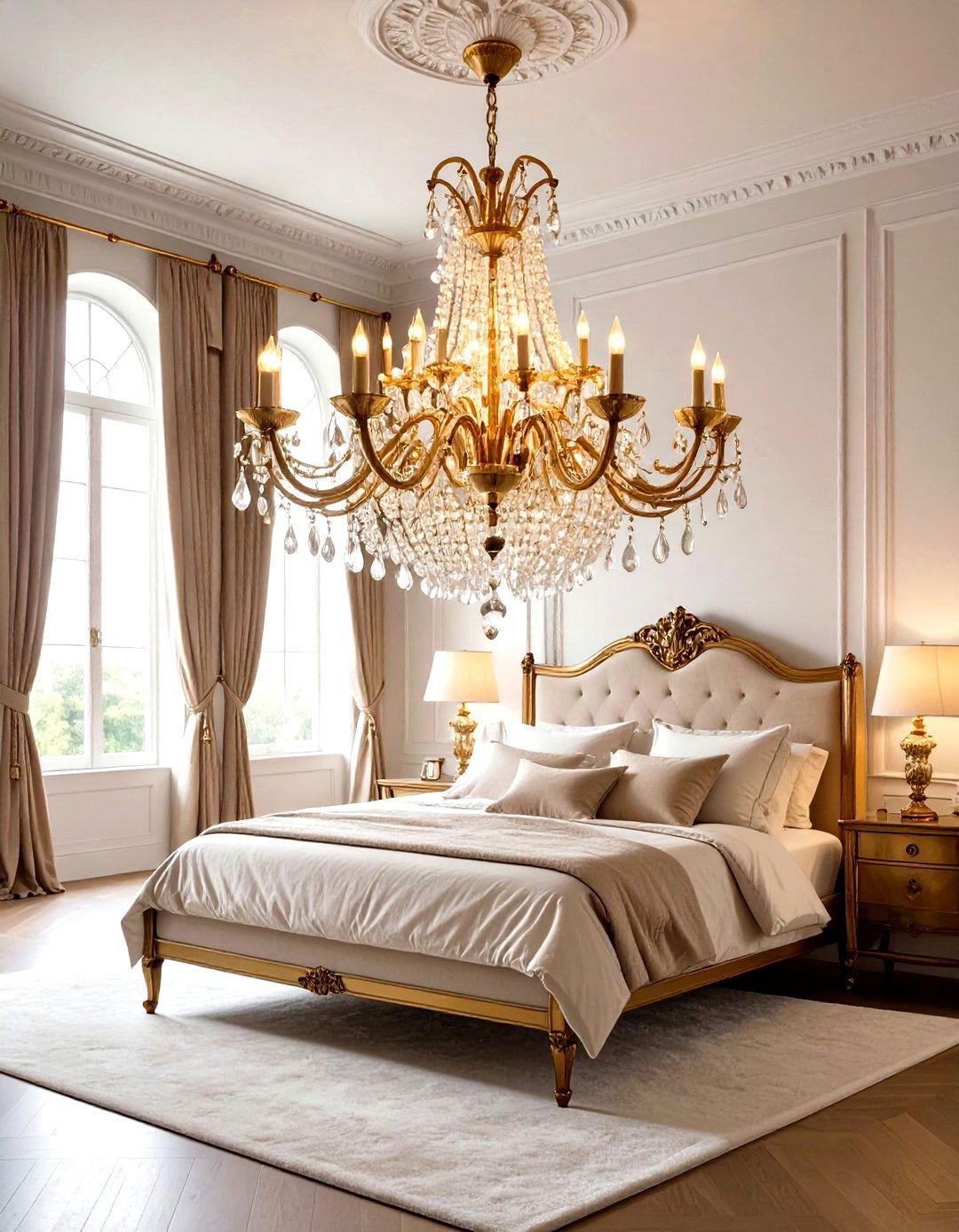
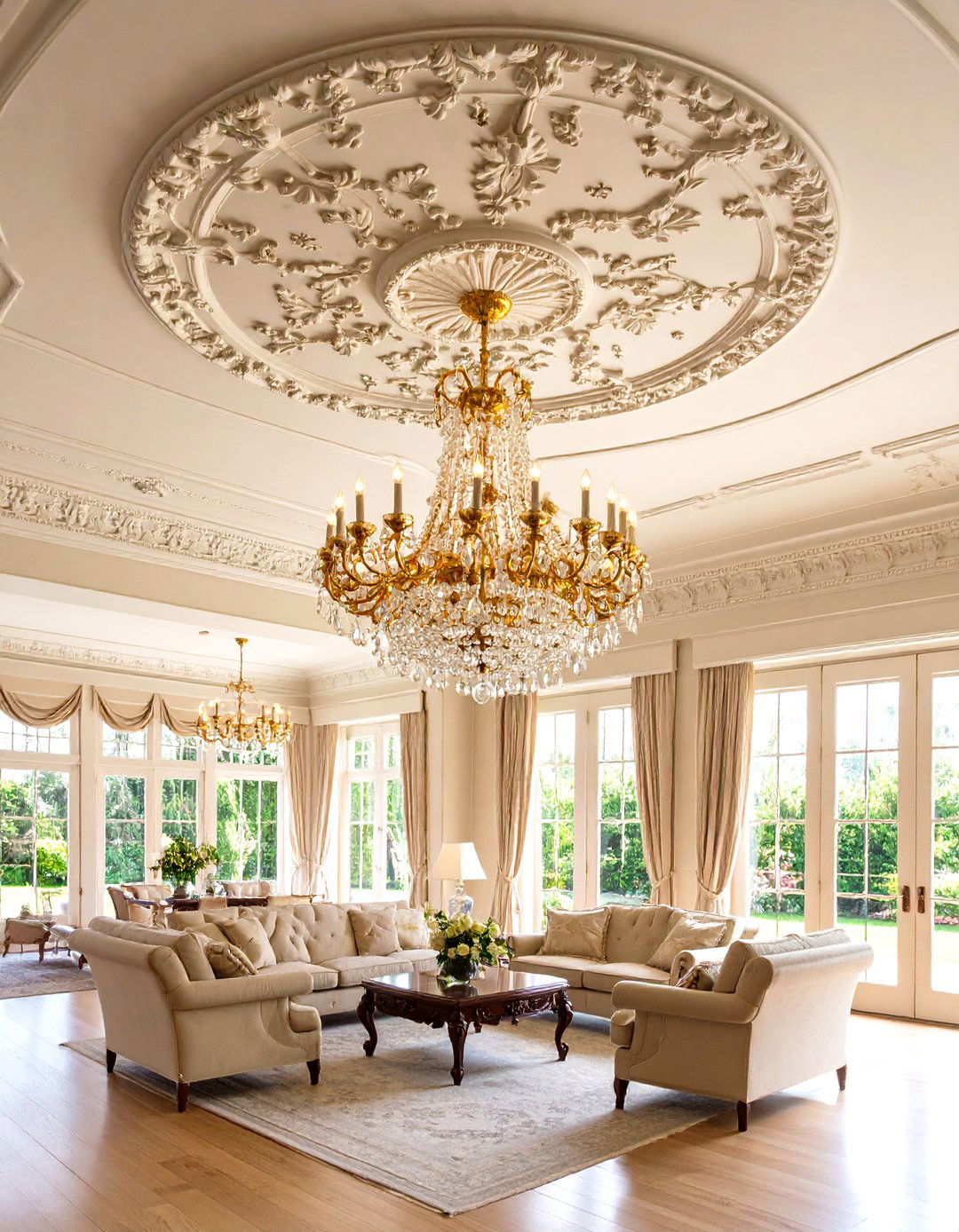
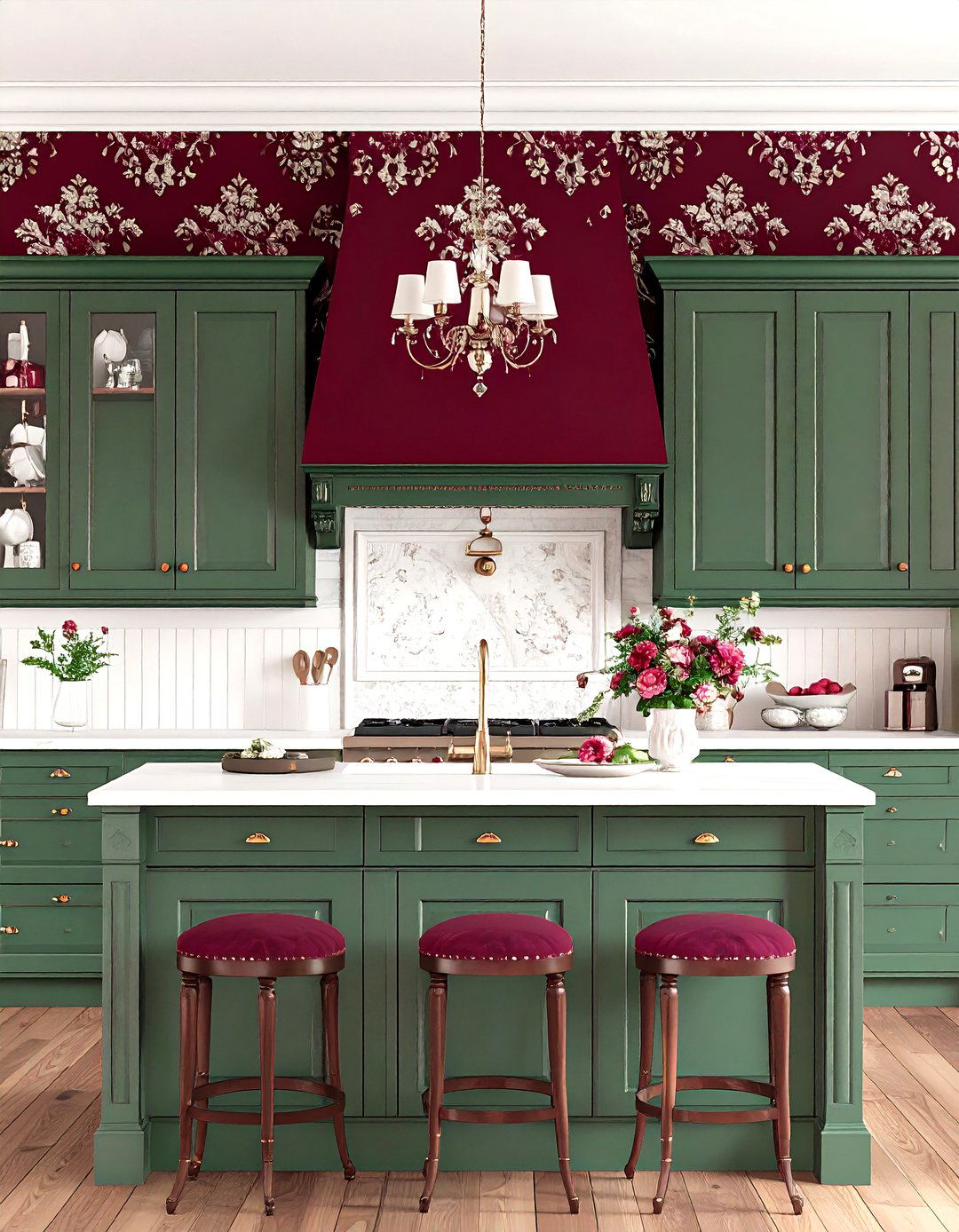

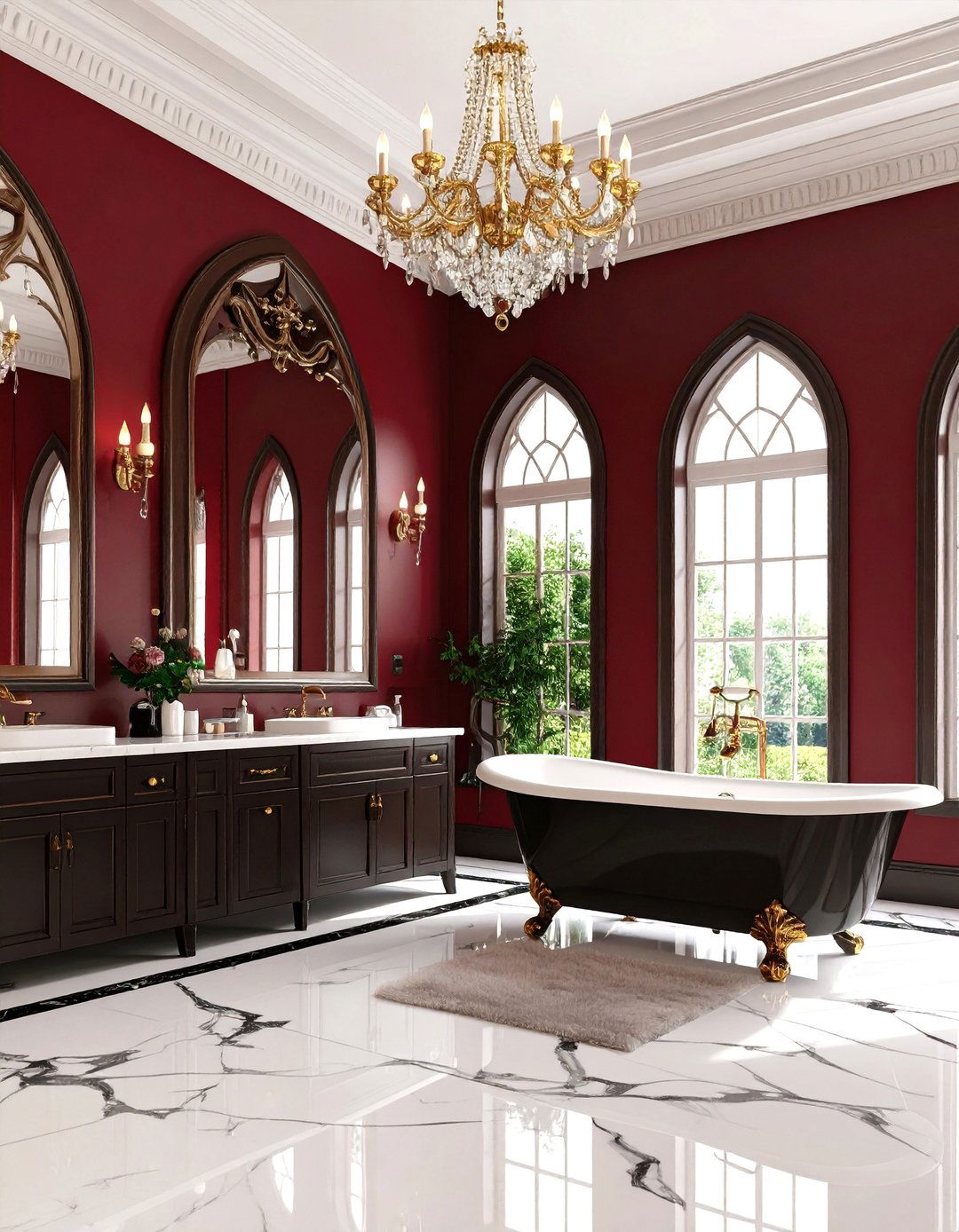
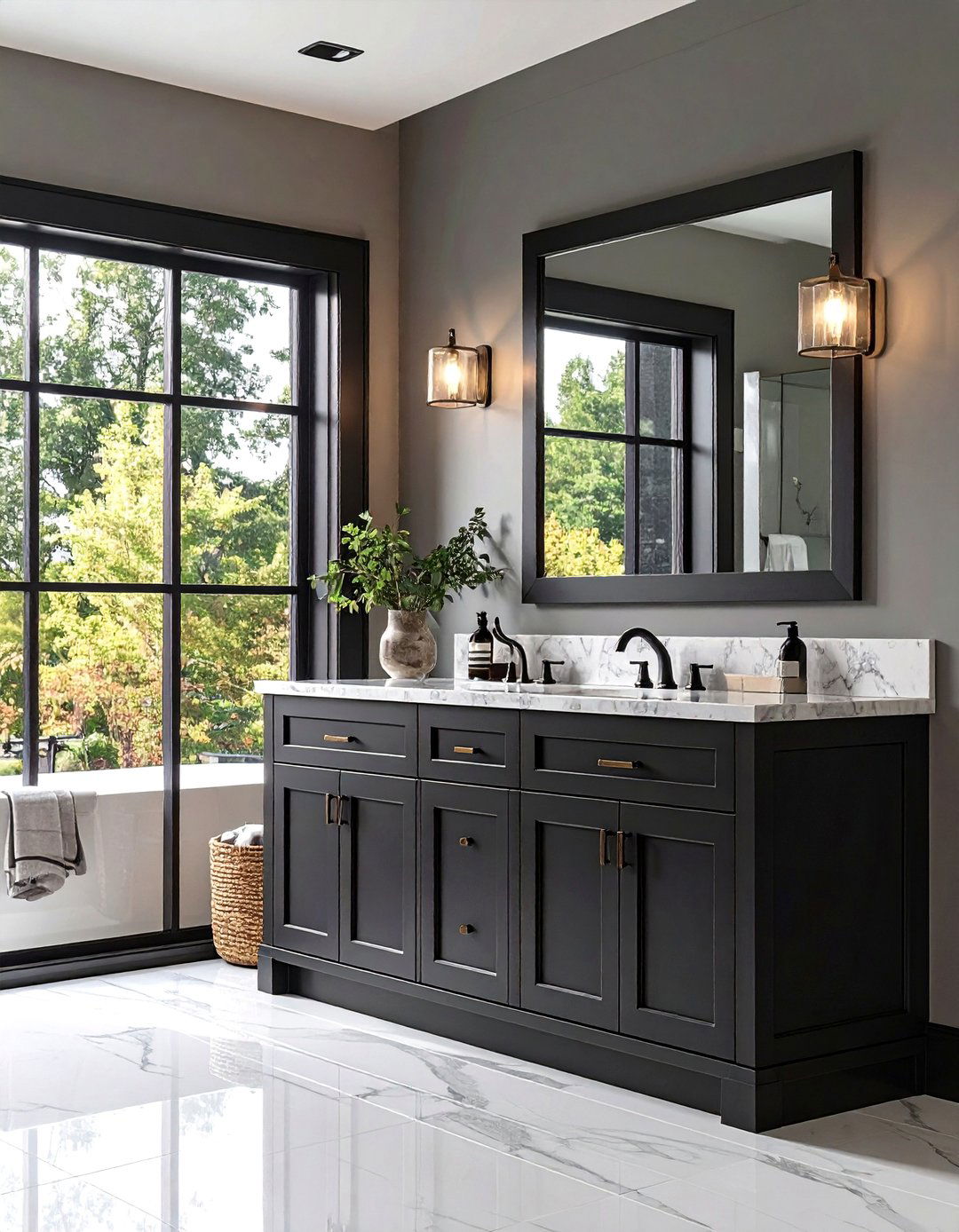
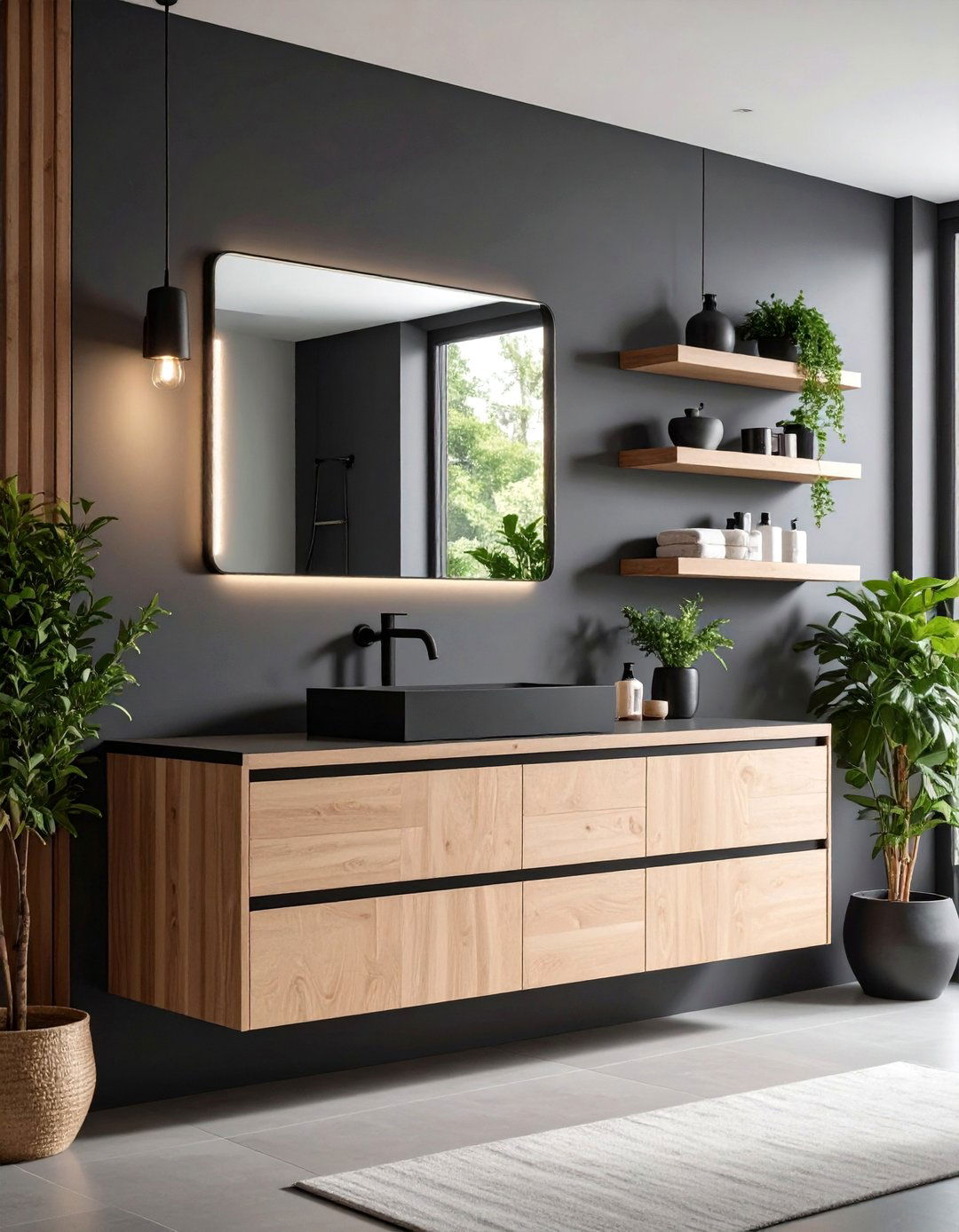
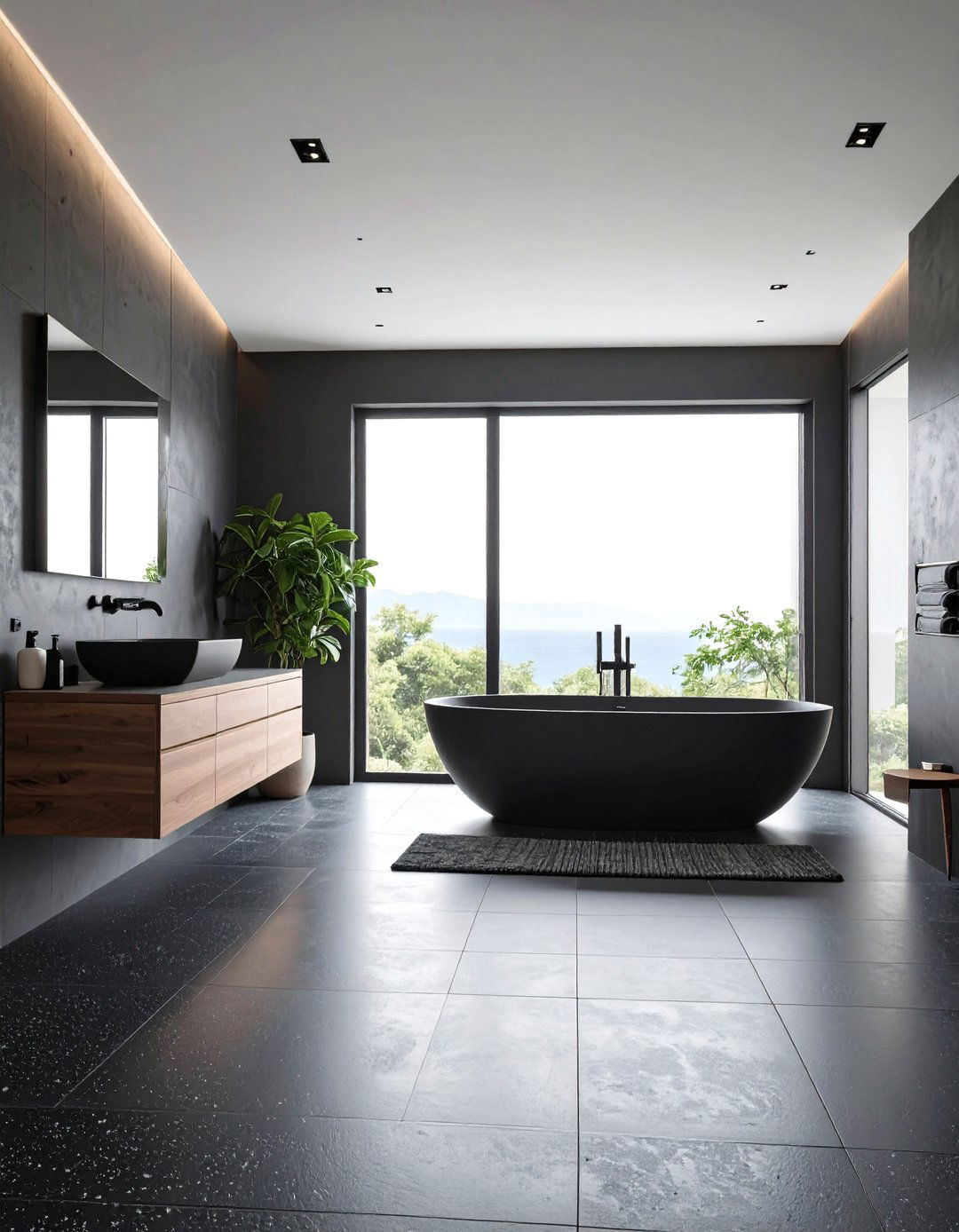

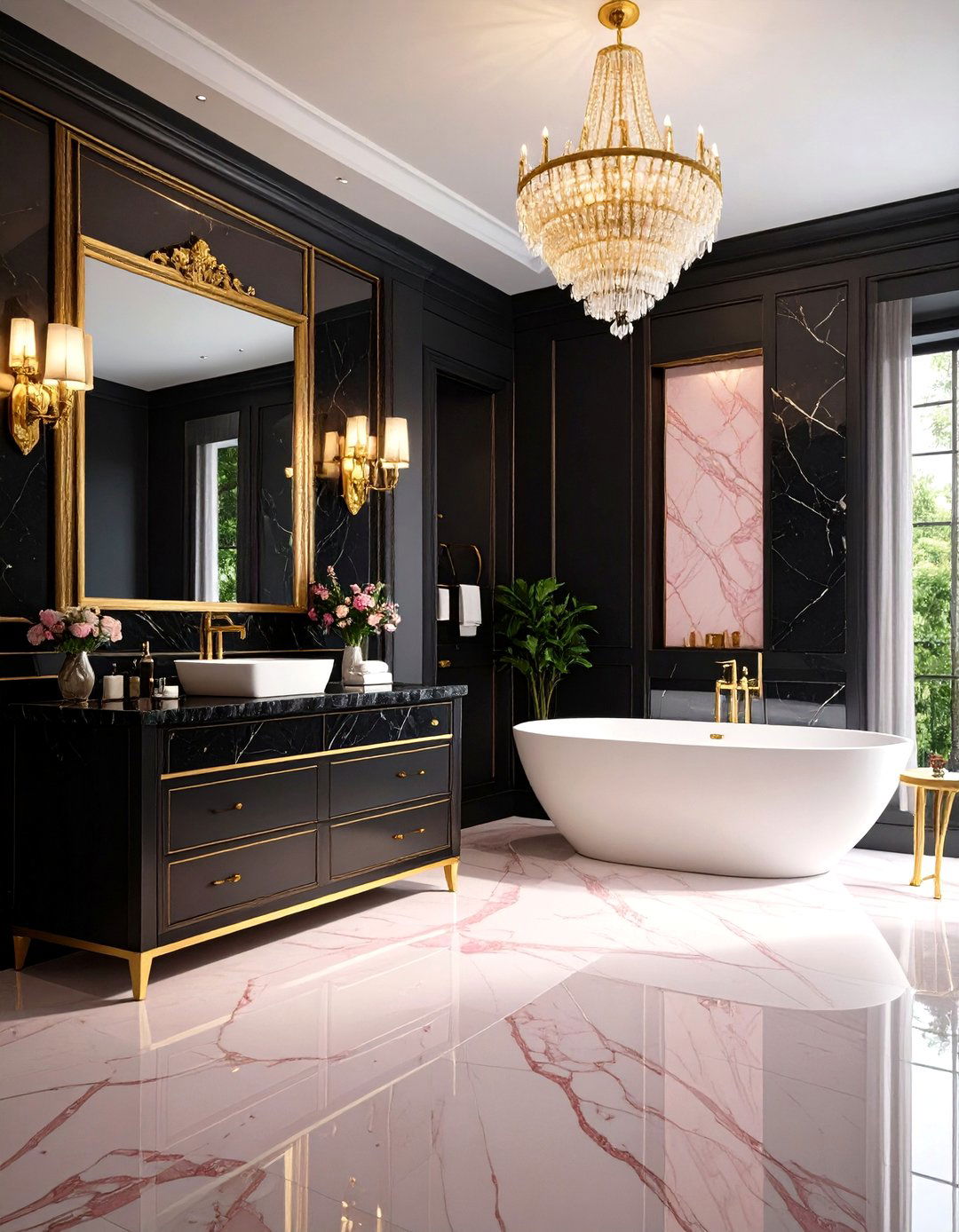
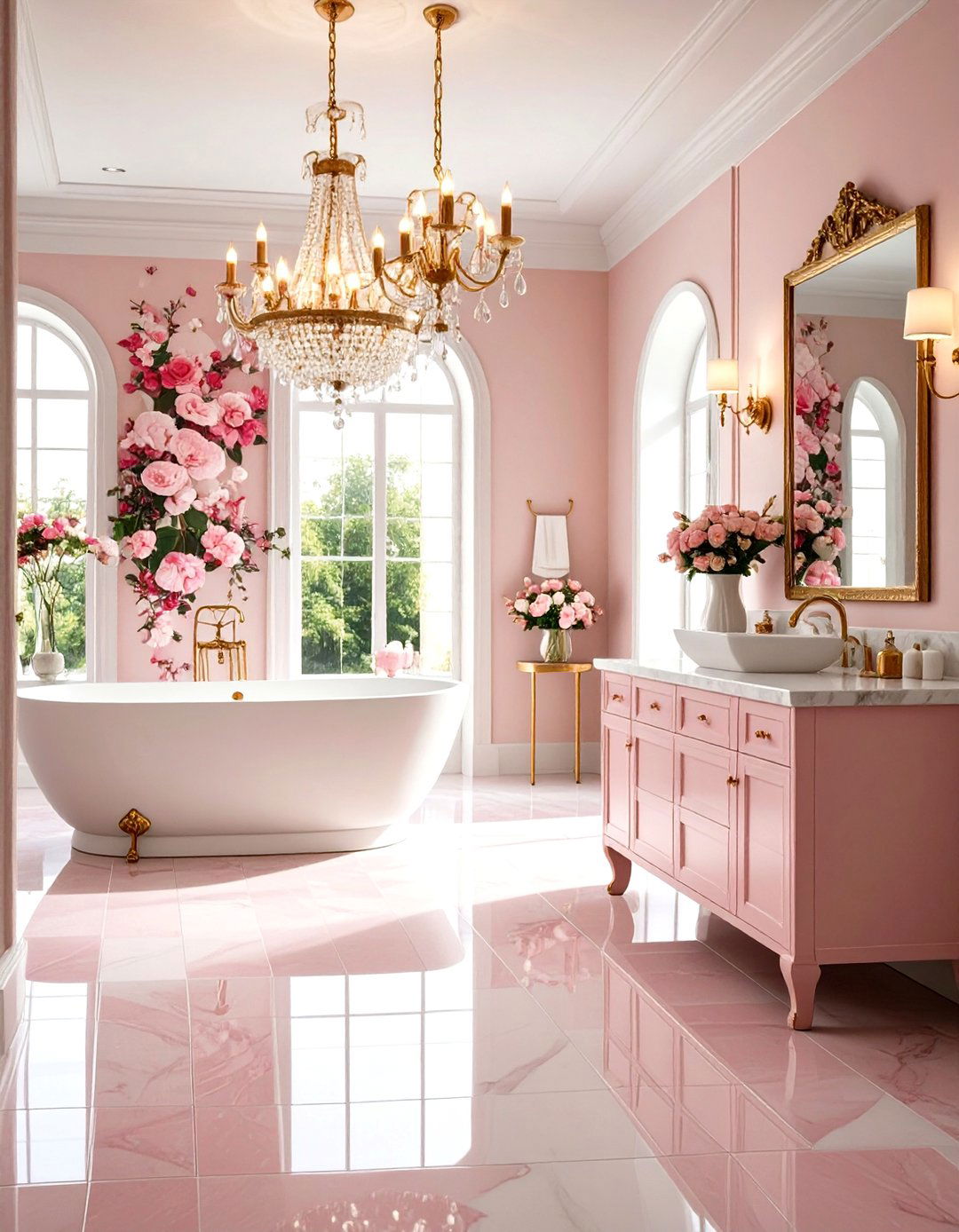
Leave a Reply